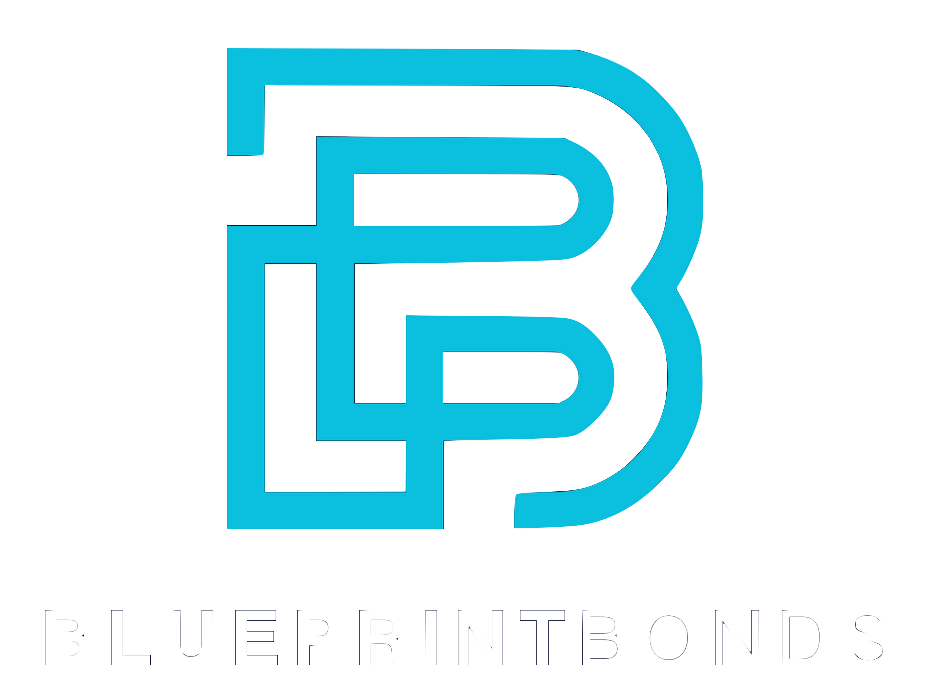In the construction industry, bond claims can quickly become costly setbacks that damage reputations and drain resources. Yet, some contractors seem to navigate projects smoothly without ever facing these claims. What sets them apart? The answer lies in one key habit that underpins their success and resilience. Understanding this habit is essential for contractors aiming to reduce risk, maintain credibility, and grow sustainably.
Construction fraud alone accounted for nearly 10% of all industry costs in 2023, equating to about $98 billion lost to fraudulent activities. This staggering figure highlights how vulnerable construction projects are to financial risks, including bond claims triggered by disputes or defaults. Contractors who avoid these pitfalls do so through a disciplined approach to risk management and operational transparency. This article explores the single most important habit that keeps contractors clear of bond claims and how adopting it can transform your business.
Before diving deeper, it is helpful to understand the broader context of risks contractors face today. For instance, CBIZ’s expert insights on construction fraud shed light on the importance of vigilant financial oversight to spot anomalies early. Let’s unpack the habit that makes all the difference.
Prioritizing Thorough Prequalification and Risk Assessment
The one habit that contractors who never have bond claims share is rigorous prequalification and ongoing risk assessment of every project and subcontractor. This habit goes beyond a simple checklist. It involves a comprehensive evaluation of financial stability, past performance, safety records, and insurance coverage before any contract is signed.
Many subcontractors find prequalification invasive, with 73% expressing discomfort with the process, and 83% viewing Subcontractor Default Insurance (SDI) as an administrative burden. Yet, these steps are critical. They act as a filter to identify potential risks early and prevent issues that could lead to bond claims. Skipping or rushing prequalification invites surprises that can escalate into costly claims.
Contractors who embed this habit into their workflow create a foundation of trust and accountability. They ensure that every party involved can meet contractual obligations, reducing the likelihood of defaults or disputes. This proactive stance aligns with expert advice from the Association of the Wall and Ceiling Industry, which highlights the importance of balancing thoroughness with administrative efficiency to keep the process effective and manageable.
How Prequalification Reduces Bond Claims
Prequalification helps contractors identify red flags such as financial instability, poor safety records, or inadequate insurance coverage. These factors are common triggers for bond claims when projects stall or fail. By addressing these risks upfront, contractors can either decline risky partnerships or negotiate terms that mitigate exposure.
This habit also supports better project planning and scheduling. According to the Project Management Institute, 73% of construction projects experience delays due to poorly managed contract schedules. Thorough prequalification includes assessing a subcontractor’s ability to meet deadlines, helping avoid delays that can lead to claims.
Furthermore, the prequalification process allows contractors to establish clear communication channels with subcontractors. By engaging in open dialogue about expectations and responsibilities, contractors can foster a collaborative environment that encourages transparency. This communication not only helps clarify roles but also allows for the identification of potential issues before they escalate into disputes. In fact, a study by the Construction Industry Institute found that projects with strong communication practices are 30% more likely to finish on time and within budget, reinforcing the value of prequalification as a tool for success.
Additionally, implementing a robust prequalification process can enhance a contractor's reputation in the industry. When contractors consistently demonstrate their commitment to quality and risk management, they become more attractive to reputable subcontractors. This creates a positive feedback loop where high-performing subcontractors are drawn to work with contractors who prioritize thorough assessments, ultimately leading to better project outcomes and fewer claims. As the construction landscape continues to evolve, those who invest in comprehensive prequalification will likely find themselves at a competitive advantage, able to navigate the complexities of modern projects with greater ease.
Maintaining Transparent Financial and Operational Practices
Another crucial aspect of avoiding bond claims is maintaining transparency in financial reporting and operational processes. Contractors who consistently monitor project costs, cash flow, and profit margins reduce the risk of surprises that can trigger claims against bonds. This proactive approach not only helps in identifying potential financial pitfalls early but also cultivates a culture of accountability within the organization. By ensuring that all team members are aware of the financial health of the project, contractors can foster a collaborative environment where everyone is invested in maintaining budgetary discipline.
Construction fraud remains a significant threat, with experts like Chuck Schwartz from CBIZ recommending the use of specialized construction CPA firms to detect anomalies such as profit fade and irregular reporting. These firms provide an extra layer of scrutiny that can catch issues before they escalate into claims. Additionally, employing technology such as data analytics and project management software can enhance the monitoring process, allowing for real-time tracking of expenses and resource allocation. This technological integration not only aids in identifying discrepancies but also streamlines communication among stakeholders, ensuring that everyone is on the same page regarding project finances.
Transparency also builds trust with sureties and clients. Phillip Ross, CPA, CGMA, emphasizes that bonds and insurance are not just risk management tools but also signals of operational credibility and long-term growth potential. Contractors who demonstrate clear, honest financial practices are more likely to maintain favorable bonding relationships and avoid claims. Establishing a reputation for integrity can lead to more favorable terms from sureties, as they are more inclined to support contractors who have a proven track record of transparency and reliability. This trust can also translate into repeat business and referrals, further solidifying a contractor's position in the market.
Integrating regular financial reviews and audits into project management is a habit that pays dividends. It allows contractors to spot trends, adjust strategies, and communicate openly with stakeholders, minimizing misunderstandings and disputes. Regular meetings to discuss financial performance can also serve as a platform for team members to voice concerns or suggest improvements, fostering a sense of ownership and engagement. Furthermore, documenting these reviews creates a valuable archive of lessons learned that can inform future projects, ensuring that the organization continuously evolves and adapts to changing market conditions.
Lessons Learned from Claims Resolution
Even contractors with the best habits occasionally face claims. What sets the most successful apart is their commitment to learning from each incident. Conner Strong advises reflecting on the “what, how, why” after resolving a claim to prevent similar issues in the future. This reflective practice not only aids in identifying the root causes of claims but also helps in developing more robust risk management frameworks that can be applied across various projects.
This reflective practice turns setbacks into opportunities for improvement. It sharpens risk awareness and informs better decision-making, reinforcing the habit of proactive risk management. By conducting thorough post-incident analyses, contractors can identify patterns that may indicate systemic issues within their operations. This can lead to the implementation of new policies or training programs designed to address these vulnerabilities, ultimately strengthening the organization’s resilience against future claims. Moreover, sharing these insights with the broader industry can contribute to a culture of transparency and continuous improvement, benefiting all stakeholders involved in the construction process.
Implementing Robust Health and Safety Management
While financial and operational diligence is vital, safety management is another pillar that supports bond claim prevention. The 2025 Health and Safety Performance Report by Associated Builders and Contractors reveals that companies engaged in the STEP Health and Safety Management System achieve incident rates 658% safer than the industry average, with an 85% reduction in total recordable incidents.
Safer job sites mean fewer accidents, delays, and disputes that can trigger bond claims. Contractors who prioritize health and safety demonstrate responsibility and reduce the risk of costly interruptions. This habit also enhances reputation and client confidence, which are essential for securing future projects and bonding capacity.
Incorporating safety best practices into daily operations is not just about compliance; it is a strategic move that supports overall project success and reduces exposure to claims. Additionally, investing in comprehensive training programs for employees fosters a culture of safety awareness. Regular drills and workshops not only equip workers with essential skills but also empower them to identify potential hazards proactively. This proactive approach can significantly mitigate risks, as employees become more vigilant and engaged in maintaining a safe working environment.
Moreover, leveraging technology can further enhance health and safety management systems. The integration of wearable safety devices, drones for site inspections, and mobile applications for incident reporting can streamline safety protocols and provide real-time data analysis. These innovations not only help in monitoring compliance but also facilitate quicker responses to potential safety breaches. As the construction industry evolves, embracing such technological advancements will be crucial for maintaining high safety standards and ensuring that projects remain on track, ultimately safeguarding both workers and the financial interests of contractors.
Adapting to Changes in Insurance and Bonding Markets
The construction insurance landscape is evolving, with recent reports indicating a decrease in excess liability limits due to rising rates. Contractors who stay informed about these market shifts can adjust their bonding and insurance strategies accordingly.
Phillip Ross highlights that bonds and insurance remain essential tools for contractors in 2025, not only for risk management but also for maintaining competitiveness. Contractors who habitually review their coverage and bonding requirements ensure they are adequately protected without overpaying.
Staying proactive in insurance management helps avoid gaps in coverage that can lead to bond claims. It also supports smoother claims handling when incidents occur, reducing financial impact and downtime.
Moreover, the increasing complexity of construction projects, coupled with stricter regulatory requirements, underscores the importance of tailored insurance solutions. As projects become more multifaceted, contractors must consider specialized coverage options such as pollution liability, professional liability, and cyber insurance to address emerging risks. These additional layers of protection not only safeguard against unforeseen liabilities but also enhance a contractor's reputation and credibility in the eyes of clients and stakeholders.
Furthermore, the digital transformation within the construction industry is reshaping how contractors approach insurance and bonding. With the rise of technology-driven solutions, such as data analytics and risk assessment tools, contractors can gain deeper insights into their risk profiles and insurance needs. This data-driven approach enables them to make informed decisions about their coverage, ensuring they are not only compliant with industry standards but also strategically positioned to capitalize on new opportunities in a competitive market.
What to Remember About the Habit That Prevents Bond Claims
Contractors who never have bond claims share a common habit: they commit to thorough prequalification, transparent financial practices, robust safety management, and continuous learning. This habit is not a one-time effort but an ongoing discipline embedded in every aspect of their operations. By ensuring that all team members are well-versed in the importance of these practices, contractors create a culture of accountability and professionalism that permeates their organization.
By adopting this approach, contractors reduce the risk of disputes, defaults, and fraud that typically trigger bond claims. They also build stronger relationships with sureties, clients, and subcontractors, positioning themselves for long-term success. For instance, regular communication with sureties can lead to better understanding and support during project execution, while transparent financial practices can foster trust and confidence among clients, encouraging repeat business and referrals.
Understanding and embracing this habit is the best investment contractors can make to protect their business and reputation in a challenging industry. Additionally, incorporating technology such as project management software and financial tracking tools can enhance these practices, allowing for real-time monitoring and adjustments. This proactive stance not only mitigates risks but also enables contractors to seize new opportunities, as they can confidently bid on larger projects knowing their foundation is solid and their practices are sound.
Frequently Asked Questions
Q: What is the most common cause of bond claims in construction?
A: Bond claims often arise from subcontractor defaults, project delays, or disputes over contract terms and payments. These issues can stem from various factors, including inadequate project management, poor communication among stakeholders, or unforeseen circumstances such as weather events. It's crucial for contractors to maintain a proactive approach in addressing potential risks and ensuring that all parties are aligned on project expectations to minimize the likelihood of claims.
Q: How does prequalification help reduce bond claims?
A: Prequalification screens subcontractors for financial stability, safety records, and insurance coverage, preventing risky partnerships that could lead to claims. This process not only helps in selecting reliable subcontractors but also fosters a culture of accountability and quality within the project team. By investing time in thorough prequalification, contractors can enhance their overall project performance and reduce the chances of encountering issues that might lead to bond claims down the line.
Q: Why is transparency important in avoiding bond claims?
A: Transparent financial and operational practices help detect issues early, build trust with sureties, and reduce misunderstandings that cause claims. Open communication channels among all parties involved in a construction project can facilitate quicker resolutions to potential disputes. Furthermore, maintaining detailed documentation and regular updates can serve as a safeguard, providing evidence of compliance with contract terms and fostering a collaborative environment that discourages claims.
Q: Can improving job site safety affect bond claims?
A: Yes. Safer job sites reduce accidents and delays, lowering the chances of disputes and claims against bonds. Implementing rigorous safety protocols not only protects workers but also enhances productivity and morale. When employees feel secure in their working environment, they are more likely to perform at their best, which can lead to timely project completion and fewer claims related to safety incidents or work stoppages.
Q: How often should contractors review their insurance and bonding coverage?
A: Contractors should review coverage annually or whenever significant changes occur in project scope or market conditions. Regular assessments help ensure that the coverage remains adequate and aligned with the evolving risks associated with ongoing and upcoming projects. Additionally, staying informed about changes in industry standards or regulations can prompt necessary adjustments to insurance policies, further protecting against potential liabilities.
Q: What should contractors do after resolving a bond claim?
A: Reflect on the causes and lessons learned to improve processes and prevent similar claims in the future. This reflection can involve conducting a thorough analysis of the circumstances surrounding the claim, gathering feedback from team members, and implementing new strategies or training sessions to address identified weaknesses. By fostering a culture of continuous improvement, contractors can not only enhance their operational practices but also build stronger relationships with sureties and clients, ultimately leading to more successful project outcomes.




